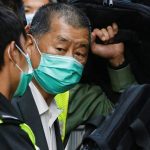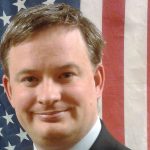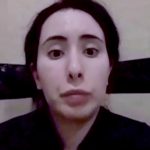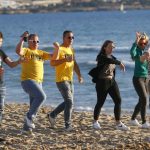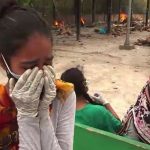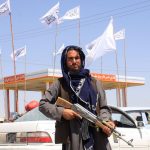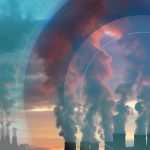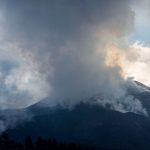World leaders are staging talks with Russia this week in a last-ditch attempt to stop Vladimir Putin invading Ukraine after months of escalating tension.
The UK government claim negotiations have reached a “critical juncture” and are desperately needed to bring the Kremlin “back from the brink of war”.
With more than 100,000 Russian troops assembled at the Ukrainian border, inside Belarus and across the Black Sea, US intelligence officials claim an invasion could happen at “any moment”.
Ambassador backtracks comments on Ukraine’s NATO membership – live updates
Russia, however, continues to deny it is planning to go to war, but has showed little sign of backing down from its demands over Ukraine and NATO.
Here Sky News looks at who the key players are in the crisis.
Russia
Ukraine still wants NATO membership after confusion it might back down to avoid Russian invasion
Ukrainian woman, 79, takes part in military training in case Russia invades Ukraine
Boris Johnson warns of ‘very, very dangerous’ situation in Ukraine amid Russia invasion fears
Vladimir Putin
A former KGB agent, Putin has led Russia since 2000 and become synonymous with the country’s increasingly hostile foreign policy.
Over the past two decades he has sought to reassert Russian dominance in the East, illegally invading and annexing the Ukrainian region of Crimea in 2014.
Russian troops began to appear on its border with Ukraine in late-2021, before the Kremlin made demands in December that NATO ceases all military activity in eastern Europe and Ukraine is never allowed to become a member.
He has repeatedly denied he is planning to invade Ukraine, but hasn’t demonstrated any will to negotiate on his demands around Ukraine and NATO.
Sergei Lavrov
Foreign Minister Sergei Lavrov has been a key negotiator in the crisis, meeting with his US counterpart, Secretary of State Antony Blinken, and numerous others from across the West.
He has been in post since 2014, when Russia annexed Crimea.
In the run-up to the invasion, he told John Kerry, the US secretary of state at the time, that Russia had “absolutely no intention of, or interest in, crossing Ukraine’s borders”.
He previously told Mr Blinken that chances of a breakthrough in talks were “low” and mocked Liz Truss, the foreign secretary, after she visited Moscow for being “unprepared” and compared their conversation to “talking to a deaf person”.
Sergei Shoigu
The defence minister also holds the rank of general of the Russian army and has been touted as a potential successor of Mr Putin given the pair’s close ties.
In post since 2012, Mr Shoigu oversaw the invasion of Crimea in 2014. Ukraine later accused him of forming illegal rebel groups who fought against the Ukrainian Army.
He has held talks with various Western powers during the recent crisis, describing UK-Russian cooperation as “close to zero” after a meeting in Moscow with his counterpart, Ben Wallace.
There are around 130,000 troops stationed on the Russian border, as well as warplanes and ships in the Black Sea.
Ukraine
Volodymyr Zelenskyy
A former actor and comedian, political outsider Volodymyr Zelenskyy won the 2019 elections by a landslide.
Mr Zelenskyy has tried to distance Ukraine from Russia, despite Mr Putin’s efforts to reassert influence on its former Soviet neighbour, instead setting his sights on both NATO and EU membership.
In response to the build-up of Russian troops at its border in late 2021, he called on NATO leaders to expedite Ukraine’s membership and claimed a group of Russians and Ukrainian rebels were planning a coup to oust him.
He has the support of the West, including the United States, which has repeatedly said it would defend Ukraine should Russia invade.
Dmytro Kuleba
The Ukrainian foreign minister and a member of its National Defense and Security Council, Dmytro Kuleba is one of the youngest senior diplomats in the country’s history.
He has repeatedly downplayed the imminent threat of a Russian invasion, accusing the US of exaggerating the danger.
During talks this month he maintained the Russian presence at Ukraine’s border is “insufficient for a large-scale military operation”.
And despite no sign of any Russian concessions, Mr Kuleba has insisted that Western presence in the region for talks “upsets the Kremlin’s plans”.
Denis Pushilin
After the Russian annexation of Crimea in 2014, two other areas, both in the eastern Donbas region, declared independence from Ukraine.
Both the self-proclaimed people’s republics of Donetsk and Luhansk are backed by Russia.
The DPR’s separatist leader Denis Pushilin has said that increasing Western support of Ukraine could mean a full-scale war with Russia breaking out at any time.
“I don’t rule out that Ukraine can attack at any moment,” he said.
Some 15,000 people have been killed in fighting between separatists and the Ukrainian Army since 2014 – with senior government sources claiming Russia has deployed around 2,000 personnel to support the region since tensions escalated late last year.
Belarus
Alexander Lukashenko
President Alexander Lukashenko is a firm ally of Mr Putin, with the two countries forming a so-called union state to support economic and military integration.
Russia has been staging military drills involving 30,000 troops inside Belarus and close to its border with Ukraine.
The strategic location of the exercises has prompted fears that should Russia go to war with Ukraine, soldiers would easily be able to access the capital Kyiv and stage an invasion.
Ukraine have described the drills as “psychological pressure”, but like Mr Putin, Mr Lukashenko is still denying there is a planned invasion.
“I’m certain there will be no war,” he said this month.
United States
With the crisis mounting and sanctions on both sides, relations between Russia and the United States have been described as “at their worst since the Cold War”.
After Russian troops emerged at the Ukrainian border last year, President Joe Biden declared his support of Ukraine and threatened the Kremlin with “strong economic and other measures”.
In January, Mr Biden was criticised for saying a “minor incursion” by Russia would result in a lesser response from western allies, before the White House clarified his comments.
The US has since been represented at negotiations by Mr Blinken, who has travelled to Kyiv and Switzerland in an attempt to talk Russia down.
Last month he said any form of Russian aggression against Ukraine would be met with a “swift, severe, united” response.
Europe
As well as NATO itself, European leaders have also been trying to negotiate with their Russian counterparts.
French President Emmanuel Macron is trying to use the Minsk accords it brokered between Ukraine and Russian-backed separatists alongside Germany in 2014 and 2015.
The Normandy format within the ceasefire agreement facilitates all four countries sitting around a negotiating table together.
Mr Macron has spoken directly to both Mr Putin and Mr Zelenskyy in recent weeks but has been criticised for some of his interventions.
Germany’s new chancellor, Olaf Scholz, is also visiting both Kyiv and Moscow.
Mr Scholz’s position is made more difficult by the Nord Stream 2 gas pipeline between Germany and Russia, which his Western allies have called on him to block, but on which no firm action has yet been taken.
NATO
The North Atlantic Treaty Organisation is made up of 30 member states across Europe and America.
Russia and Ukraine are not members, but the latter has been pathing a way to NATO membership since the Soviet Union collapsed in 1991.
Mr Putin’s main concern is NATO dominance in eastern Europe, where he is trying to re-establish Russia’s Soviet-era influence.
He is demanding NATO never allow Ukraine to become a member.
Jens Stoltenberg, its secretary general, has said that a “sovereign, independent and stable Ukraine” is “key to Euro-Atlantic security” and is backing member states in their negotiations with Russia.
Although aiming for a peaceful resolution, NATO troops could be used to back Ukraine in the event of an invasion.


